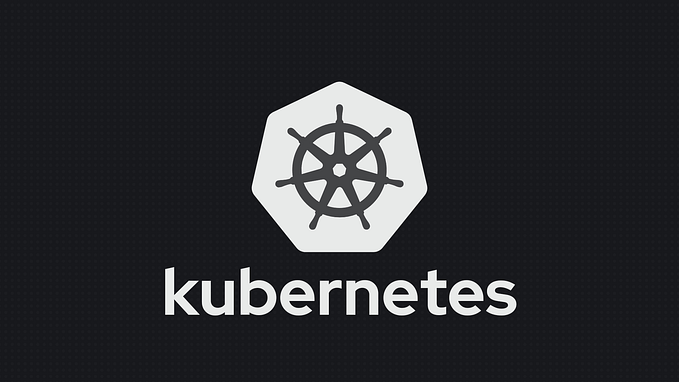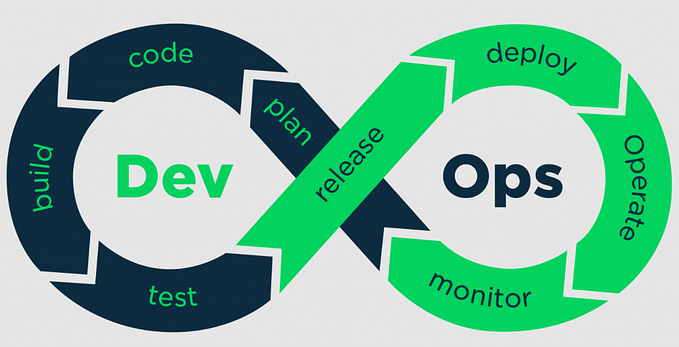What Is Security Context In Kubernetes?
Security Context in Kubernetes is a feature that enables you to set security-related attributes for Pods and containers running on a Kubernetes cluster. These attributes are used to ensure that containers and workloads are running with the appropriate level of security measures in place.
Security Context in Kubernetes provides a range of options that can be configured to achieve specific security objectives. For example, it can be used to set a container’s user ID and group ID, which can help to prevent attackers from gaining access to the host system or other containers running on the same node. Additionally, Security Context can be used to set file permissions, Linux capabilities, and other attributes that control how a container behaves within a Kubernetes cluster.

One important aspect of Security Context in Kubernetes is the ability to run containers as non-root users. By default, containers in Kubernetes run as the root user, which can pose a significant security risk. However, by using Security Context, you can run containers as non-root users, which can help to reduce the attack surface and prevent unauthorized access to the host system.
Another use case for Security Context in Kubernetes is to restrict container access to specific system resources. For example, you can use Security Context to limit a container’s access to network interfaces or to prevent it from accessing sensitive data on the host system.
To use Security Context in Kubernetes, you can define it in the YAML definition of a Pod or container. This can include specifying runAsUser, runAsGroup, and other attributes. It’s important to note that Security Context should be used in conjunction with other Kubernetes security features, such as role-based access control (RBAC) and network policies, to ensure that your Kubernetes cluster is properly secured.
In summary, Security Context in Kubernetes is a crucial feature for securing containers and workloads running on a Kubernetes cluster. By defining security-related attributes such as user IDs, file permissions, and Linux capabilities, you can reduce the risk of vulnerabilities and unauthorized access.
How to define Security Context?
Defining Security Context in Kubernetes can be done at the Pod or container level, and it involves specifying various attributes that control how the container behaves in terms of security.
Here are some common attributes that can be defined in the Security Context:
runAsUser: This attribute defines the user ID that the container will run as. By default, containers in Kubernetes run as the root user, which can be a significant security risk. You can userunAsUserto specify a non-root user ID for the container, which can help to reduce the attack surface.runAsGroup: This attribute defines the group ID that the container will run as. Similar torunAsUser, you can userunAsGroupto specify a non-root group ID for the container.privileged: This attribute specifies whether the container should be run with privileged access to the host system. By default, containers run in a non-privileged mode, which provides a level of isolation and security. However, some applications may require privileged access to perform certain operations.readOnlyRootFilesystem: This attribute specifies whether the container's root file system should be read-only. This can help to prevent attackers from modifying the container's file system and potentially gaining access to sensitive data.seccompProfile: This attribute specifies the Seccomp profile that the container should use. Seccomp is a Linux kernel feature that allows you to restrict the system calls that a process can make. By using Seccomp, you can further reduce the attack surface of the container.
Here’s an example YAML definition for a Pod with Security Context:
apiVersion: v1
kind: Pod
metadata:
name: my-pod
spec:
containers:
- name: my-container
image: my-image
securityContext:
runAsUser: 1000
runAsGroup: 3000
readOnlyRootFilesystem: true
seccompProfile:
type: RuntimeDefaultIn this example, the Pod contains one container (my-container) that runs as a non-root user with a user ID of 1000 and a group ID of 3000. The container's root file system is set to read-only, and the Seccomp profile is set to the default runtime profile.
It’s important to note that Security Context is just one aspect of Kubernetes security, and it should be used in conjunction with other security features such as RBAC and network policies to ensure that your cluster is properly secured.
Importance of Security Context
The importance of Security Context in Kubernetes cannot be overstated. It helps ensure that your workloads are running with the appropriate security measures in place, reducing the risk of vulnerabilities and unauthorized access.
Here are some specific reasons why Security Context is important:
- Container Isolation: Security Context enables container isolation by setting appropriate user IDs, file permissions, and other security attributes. This helps prevent unauthorized access and minimizes the risk of security breaches.
- Compliance: In many cases, regulatory compliance requires the use of least privilege and separation of duties. Security Context can help you meet these requirements by ensuring that containers are running with the minimum level of privileges needed to perform their tasks.
- Protection from Exploits: Kubernetes is a high-profile target for cyberattacks, and attackers can exploit vulnerabilities in containerized applications to gain access to sensitive data. By using Security Context, you can reduce the risk of exploits by preventing attackers from accessing system resources that are not needed for the application to run.
- Trust: When running third-party applications or code, you may not trust the code to run with root privileges. Security Context can help mitigate the risks associated with untrusted code by limiting the access and permissions granted to the container.
- Defense in Depth: Kubernetes Security is about layering multiple security controls to build a defense-in-depth architecture. By using Security Context, you add an additional layer of security control to your Kubernetes environment.
Security Context is an essential part of Kubernetes security, and it should be used to ensure that your containers are running with the appropriate security measures in place. By using Security Context, you can reduce the risk of vulnerabilities and unauthorized access, protect your system from exploits, and help ensure regulatory compliance.
Use Cases Of Security Context
Here’s an overview of different use cases where Security Context is particularly useful in Kubernetes:
- Running Containers as Non-Root Users: By default, containers in Kubernetes run as the root user, which can pose a security risk. Security Context can be used to specify a non-root user to run the container, which can help reduce the risk of privilege escalation attacks.
- Restricting Container Access to Specific System Resources: Security Context can be used to restrict the container’s access to specific system resources, such as restricting read or write access to specific directories. This can help reduce the risk of unauthorized access and data leaks.
- Running Containers with Specific Capabilities: Kubernetes allows containers to run with specific Linux capabilities, such as the ability to modify kernel parameters or to access raw socket connections. However, running containers with elevated privileges can be risky. Security Context can be used to restrict the capabilities of a container, which can help to reduce the attack surface.
- Securing Network Communication: Kubernetes allows you to specify network policies that restrict network traffic between different Pods. Security Context can be used to enforce additional security measures, such as specifying secure communication protocols, enabling SSL/TLS encryption, and more.
- Complying with Regulatory Requirements: Security Context can be used to comply with regulatory requirements, such as HIPAA, GDPR, or PCI-DSS, by enforcing security-related attributes, such as file permissions, access controls, and more.
In general, Security Context is useful in any scenario where you need to enforce specific security-related attributes or restrict the access of a container to system resources. By using Security Context effectively, you can reduce the risk of vulnerabilities and unauthorized access in your Kubernetes environment.
Security Best Practices
Here are some security best practices to consider when working with Security Context in Kubernetes:
- Use least privilege: Ensure that containers and Pods are running with the least privilege possible. This means that containers should not have access to more resources than they need to perform their intended function. This can help to reduce the impact of any security breaches that may occur.
- Avoid using the root user: Running containers as the root user can pose a significant security risk. If a container is compromised, an attacker could potentially gain root-level access to the host system. It’s best to run containers as non-root users whenever possible.
- Keep your cluster up-to-date: Keep your Kubernetes cluster up-to-date with the latest security patches and updates. This can help to ensure that any known vulnerabilities are addressed and that your cluster remains secure.
- Limit network access: Limiting network access to your containers and Pods can help to reduce the risk of unauthorized access. Use Kubernetes network policies to restrict traffic between Pods and enforce secure communication protocols.
- Use secure images: Use only trusted and verified container images from reputable sources. This can help to reduce the risk of running containers with known security vulnerabilities.
- Use Pod Security Policies: Pod Security Policies are a Kubernetes feature that allows you to define security policies for Pods in a cluster. You can use Pod Security Policies to enforce security best practices across your cluster.
- Monitor and audit: Monitor and audit your Kubernetes cluster regularly to detect any security vulnerabilities or potential security breaches. Use Kubernetes tools like Prometheus and Grafana to collect and analyze security-related data from your cluster.
By following these best practices, you can help to ensure that your Kubernetes cluster remains secure and your workloads are running with the appropriate security measures in place.
Common Misconfigurations
here are some common misconfigurations that can leave Kubernetes clusters vulnerable:
- Running containers as the root user: Running containers as the root user can be dangerous as it gives the container unrestricted access to the host system. Instead, it’s recommended to run containers as non-root users whenever possible.
- Not setting file permissions properly: Setting proper file permissions is important for securing Kubernetes workloads. If file permissions are too permissive, it could allow unauthorized users or processes to access sensitive data or modify critical files.
- Allowing privileged containers: Privileged containers have elevated permissions, which can lead to security issues. For example, a privileged container can bypass security measures in place on the host system.
- Using default or weak passwords: Using default or weak passwords for Kubernetes components like etcd, the Kubernetes API server, or worker node SSH access can make your cluster vulnerable to attacks like brute force or credential stuffing attacks.
- Not monitoring and auditing cluster activity: Without proper monitoring and auditing in place, it’s difficult to identify and respond to security threats or suspicious activity in the cluster.
To mitigate these misconfigurations, some best practices include:
- Avoid running containers as the root user whenever possible. Instead, create a non-root user for each container and specify the user ID in the Security Context.
- Set file permissions properly, and avoid using overly permissive file permissions.
- Avoid using privileged containers. If you must use privileged containers, be sure to thoroughly understand the implications and take extra precautions to secure them.
- Use strong, unique passwords for Kubernetes components, and avoid using default or weak passwords.
- Implement proper monitoring and auditing of your Kubernetes cluster to detect and respond to any security threats or suspicious activity.
Third-party Tools
In addition to following security best practices and avoiding common misconfigurations, there are also third-party tools available that can help you manage Security Context in Kubernetes.
Some of these tools include:
- Aqua Security: Aqua Security provides a comprehensive security platform for Kubernetes that includes runtime protection, vulnerability scanning, and compliance management. It offers a Security Context Advisor that can help you identify potential security risks in your Kubernetes environment and provide recommendations for improving your security posture.
- Sysdig: Sysdig offers a cloud-native security platform that includes container and Kubernetes monitoring, as well as threat detection and response capabilities. It provides a Security Context Advisor that can help you configure your Kubernetes Security Context to improve your security posture.
- Falco: Falco is an open-source runtime security tool that is specifically designed for Kubernetes. It uses a rules-based engine to detect and alert on potential security threats in real-time. It can also be configured to enforce security policies by blocking or terminating containers that violate your Security Context settings.
- OPA Gatekeeper: OPA Gatekeeper is an open-source policy engine for Kubernetes that allows you to define and enforce policies at the cluster level. It provides a Kubernetes-native way to define policies and enforce them across your entire cluster. Click here for more info
- Kube-bench: Kube-bench is an open-source tool that helps you run CIS Kubernetes benchmark tests on your cluster to identify potential security vulnerabilities. It provides a comprehensive report on areas where your cluster may be at risk and offers recommendations for improving your security posture.
Overall, these tools can help you manage Security Context in Kubernetes more effectively by providing automated checks and alerts, as well as by streamlining policy enforcement and compliance management. It’s worth considering using one or more of these tools as part of your overall Kubernetes security strategy.









